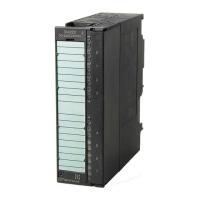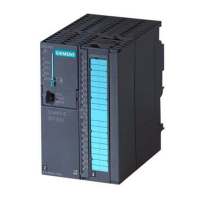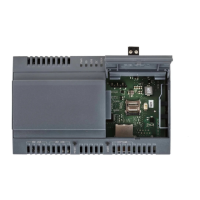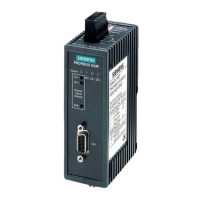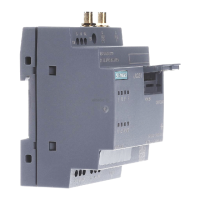Instructions
11.1 S7-1500 Motion Control V2
S7-1500 Motion Control V13 Update 3
270 Function Manual, 07/2014, A5E03879256-AC
Section
Using "Exe_1", an "MC_MoveRelative" job with a distance of 50.0 is initiated. At the point in time
①, using
"Exe_2", a MC_MoveSuperimposed job with a distance of 50.0 is initiated. The axis is traversed with the added
dynamic values of both jobs with the distance 50 + 50 = 100.0. When the axis reaches the target position,
Section
Using "Exe_1", an "MC_MoveRelative" job with a distance of 50.0 is initiated. At the point in time
, using
"Exe_2", a MC_MoveSuperimposed job with a distance of-50.0 is initiated. The axis is traversed with the added
dynamic values of both jobs with the distance 50.0 - 50.0 = 0.0. When the axis reaches the target position,
MC_GearIn: Start gearing V2
Description
With the Motion Control instruction "MC_GearIn", you can start a relative gearing between a
leading axis and a following axis.
Dynamic behavior of the following axis during synchronization is defined with the
parameters"Jerk", "Acceleration", and "Deceleration" .
You specify the gear ratio as the relationship between two integers (numerator/denominator)
with the parameters "RatioNumerator" and "RatioDenominator". You can change the gear
ratio during operation by placing a new "MC_GearIn" job. Transition processes are executed
with the specified dynamic values.
The numerator of the gear ratio is specified as positive or negative. This results in the
following response:
●
The leading and following axes move in the same direction.
●
:
The following axis rotates in the opposite direction of the leading axis.
You can start synchronous operation when the leading axis is at a standstill or when it is in
motion.
A position offset can occur between leading axis and following axis during synchronization.
This position offset depends on the start time of the "MC_GearIn" and the duration of the
synchronization process. The position offset is not compensated.
● Synchronous axis

